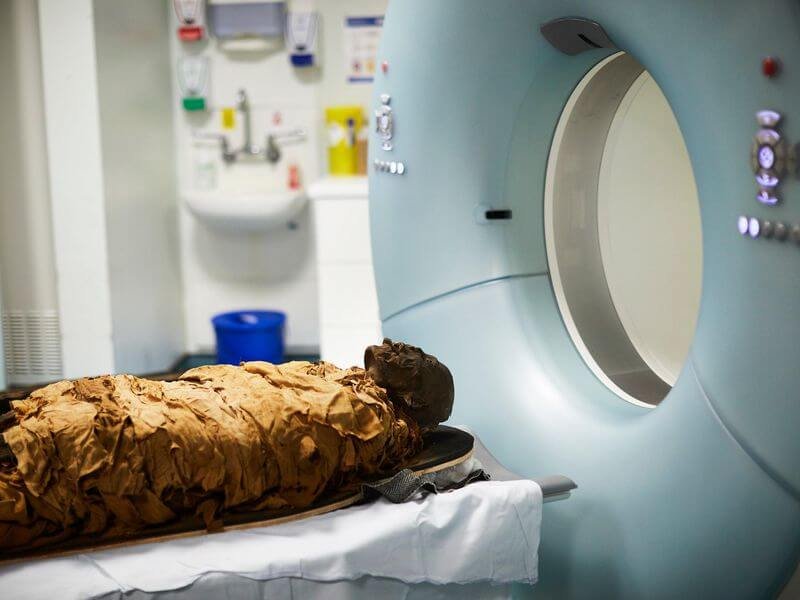David Howard at Royal Holloway, University of London, and his colleagues have reconstructed the vocal tract of Nesyamun, a priest who lived more than 3000 years ago during the reign of pharaoh Ramses XI.
They have used the reconstruction to reproduce a sound that falls between the English vowel sounds in “bed” and “bad”, and resembles a brief groan.
…
The team used CT scans to image the mummy’s vocal tract, measuring the position of the airway, bone and soft tissue structures.
The vocal tract – which in humans consists of the laryngeal cavity, the pharynx, and the oral and nasal cavities – was then digitally recreated. Finally, the resulting model was 3D printed and used with an electronic larynx that generates sound.
The mummy is preserved in a reclining position, with the head tilted back. “What we’ve ended up with is the sound of his vocal tract as it is set in his coffin,” says Howard. “It isn’t necessarily an articulation position he would have used in speech.”
…
Nesyamun worked as a scribe and priest in Thebes, and his ritual duties involved spoken and sung elements. Inscriptions on his coffin include an epithet that translates to “true of voice”.































